Introduction to Macroeconomics Chapter Notes | Economics Class 12 - Commerce PDF Download
| Table of contents |

|
| Introduction to Macroeconomics |

|
| Emergence of Macroeconomics |

|
| Context of the Present Book of Macroeconomics |

|
| Summary |

|
Introduction to Macroeconomics
Macroeconomics comes from the Greek word ‘makro’, meaning “large”. It's a part of economics that studies big economic factors like total income and spending. An aggregate is a group of economic items that share common traits. Macroeconomics became its own branch of economics after the British economist John Maynard Keynes published his important book The General Theory of Employment, Interest and Money in 1936. This field focuses on the overall economic variables of an economy and considers various connections that may exist between different sectors. It also examines the rules, issues, and policies needed to achieve full employment and increase production.
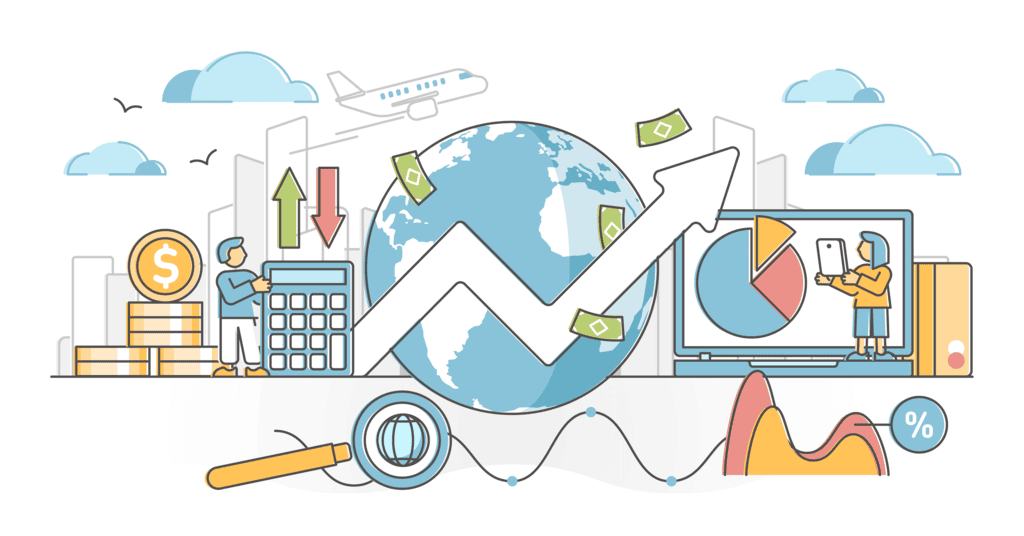
Key Questions in Macroeconomics:
Macroeconomics asks questions which concern all citizens, such as:
- Will prices rise or fall?
- Is employment improving or worsening?
- What indicators show if the economy is doing better or worse?
- What can the government or people do to improve the economy?
Economic Agents
- Economic agents are individuals or groups who make choices related to the economy.
- These can include producers or service providers who determine what and how much to create.
- They also encompass entities like the government, corporations, and banks, which make various economic decisions, such as spending levels, interest rates for loans, and tax amounts.
Macroeconomics Overview
- Macroeconomics addresses situations impacting the entire economy.
- Adam Smith, the founding father of modern economics, suggested that if buyers and sellers act in their self-interest, the wealth and welfare of the country as a whole wouldn't need separate consideration.
- Macroeconomics became its own field in the 1930s, largely due to the work of Keynes.
- This field views the economy as made up of four sectors: households, firms, government, and the external sector.
- Economists discovered the need to look beyond individual market decisions for several reasons:
- Some markets did not or could not exist.
- Some markets existed but failed to balance demand and supply.
- Society often pursued important social goals in areas like employment, administration, defence, education, and health, which required modifying the aggregate effects of individual economic decisions.
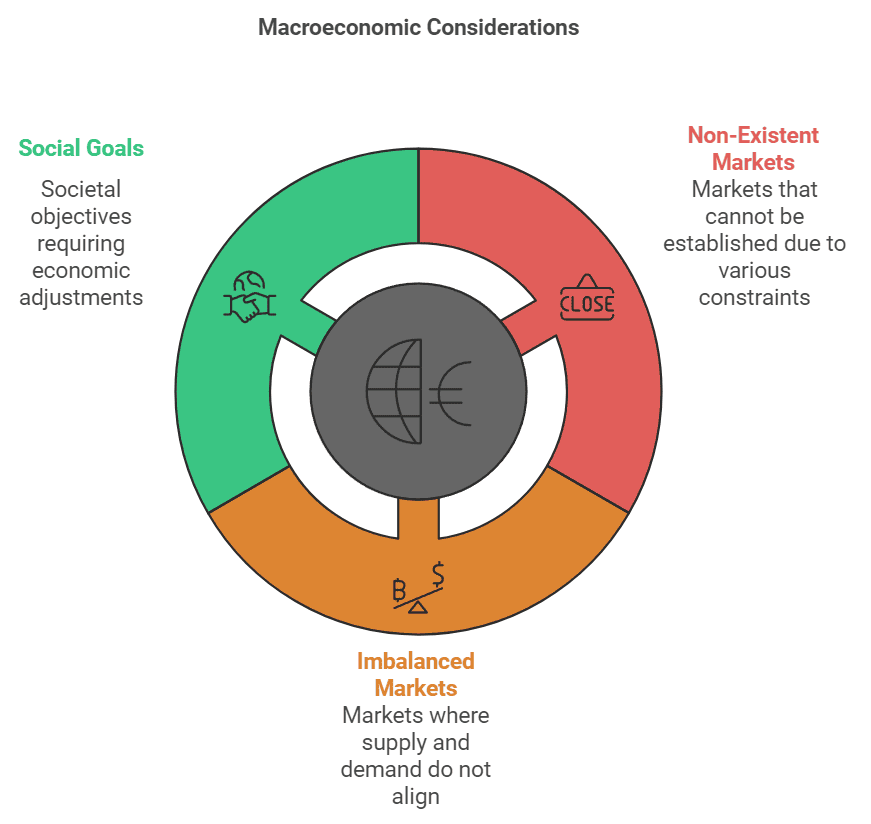
Key Areas of Macroeconomics
- Effects of taxation and other budgetary policies on markets.
- Policies for changing money supply, interest rates, wages, employment, and output.
Relationship with Microeconomics
- Macroeconomics is deeply rooted in microeconomics as it looks at the overall effects of demand and supply in markets. It also addresses policies aimed at adjusting these forces to achieve societal goals beyond market outcomes. In developing countries like India, decisions are made to tackle issues like unemployment, enhance access to education and healthcare, ensure effective governance, and provide adequate national defence.
- Macroeconomic policies are implemented by the State or agencies like the Reserve Bank of India (RBI), Securities and Exchange Board of India (SEBI), and similar organisations. Therefore, the macroeconomic agents differ significantly from individual decision-makers.
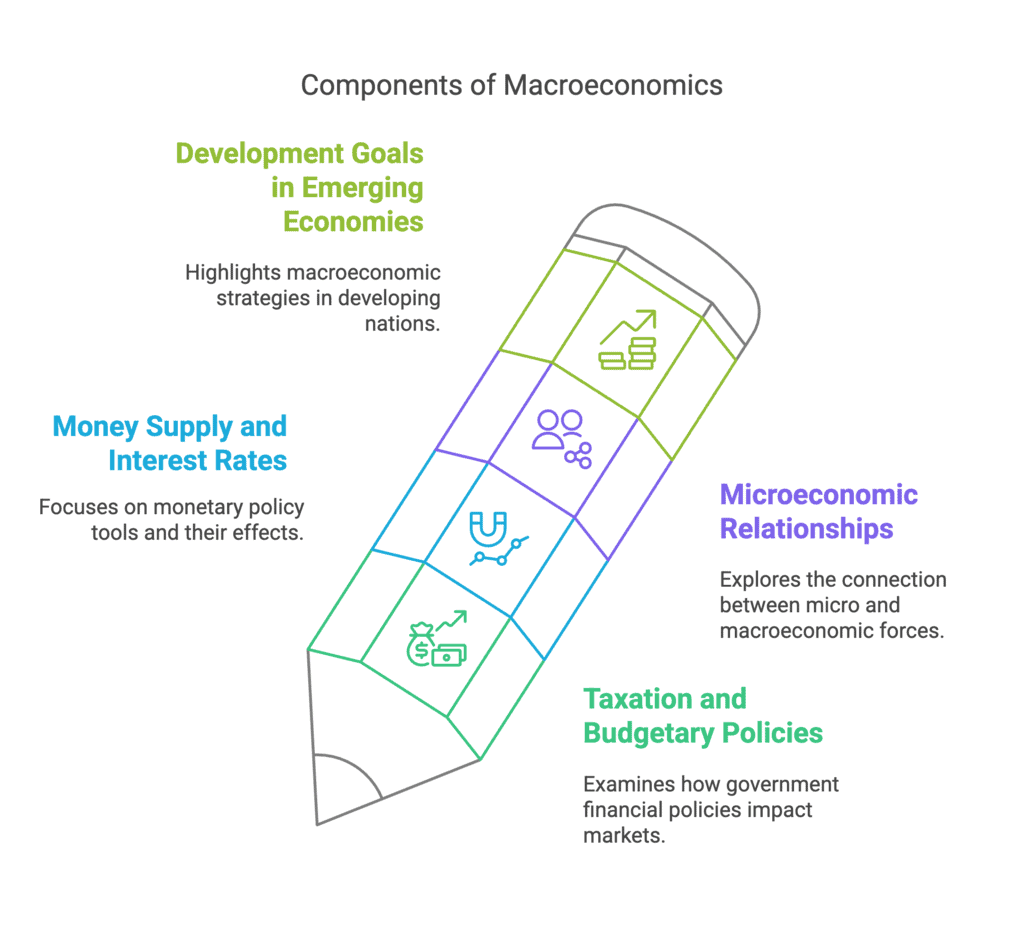
Emergence of Macroeconomics
- Macroeconomics emerged as a separate branch of economics after John Maynard Keynes published his book The General Theory of Employment, Interest and Money in 1936.
- Before Keynes, the dominant economic thinking was that all ready labourers would find employment and all factories would operate at full capacity, known as the classical tradition.
- The Great Depression of 1929 caused significant declines in output and employment in Europe and North America and affected other countries globally.

- During this period, demand for goods was low, many factories were idle, and workers lost their jobs.
- In the USA, the unemployment rate rose from 3% in 1929 to 25% in 1933.
- The unemployment rate is defined as the number of people not working but looking for jobs divided by the total number of people working or looking for jobs.
- From 1929 to 1933, aggregate output in the USA fell by about 33%.
- These events prompted economists to rethink how the economy functions.
- The possibility of long-lasting unemployment needed to be theorised and explained.
- Keynes' book was an attempt to address these issues by examining the economy as a whole and the interdependence of different sectors.
- This new approach led to the birth of the subject of macroeconomics.
Context of the Present Book of Macroeconomics
Capitalist Country
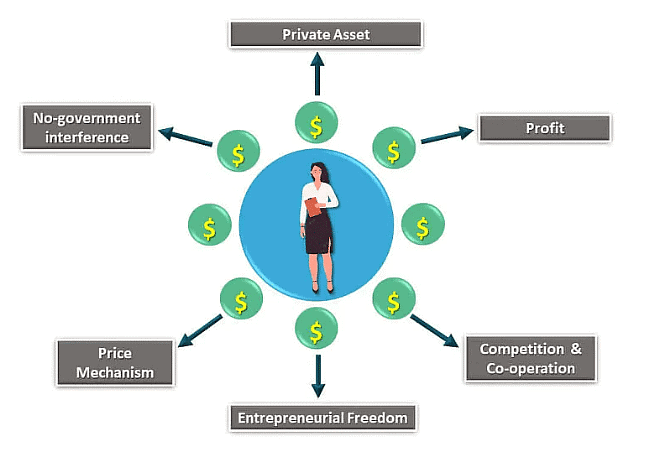
- In a capitalist country, most of the production is done by private businesses.
- These businesses are often run by entrepreneurs who provide the money needed to operate, either from their own funds or by borrowing.
- Ralph Waldo Emerson said, “Doing well is the result of doing good. That's what capitalism is all about.”
- In this economy, the means of production are privately owned.
- It is mainly controlled by prices, with no government interference.
- The government’s only role is to maintain law and order.
- The main goal of production is to make a profit.
- This type of economy is also called a free-market economy or laissez-faire.
- Examples of capitalist economies are Hong Kong, Singapore, Canada, the UAE, Ireland, and others.
Key Features of Capitalist Economy
- Private property
- No government interference
- Profit motive
- Freedom of enterprise
- Freedom of ownership
- Flexible labour markets
- Consumer choice
- Price control
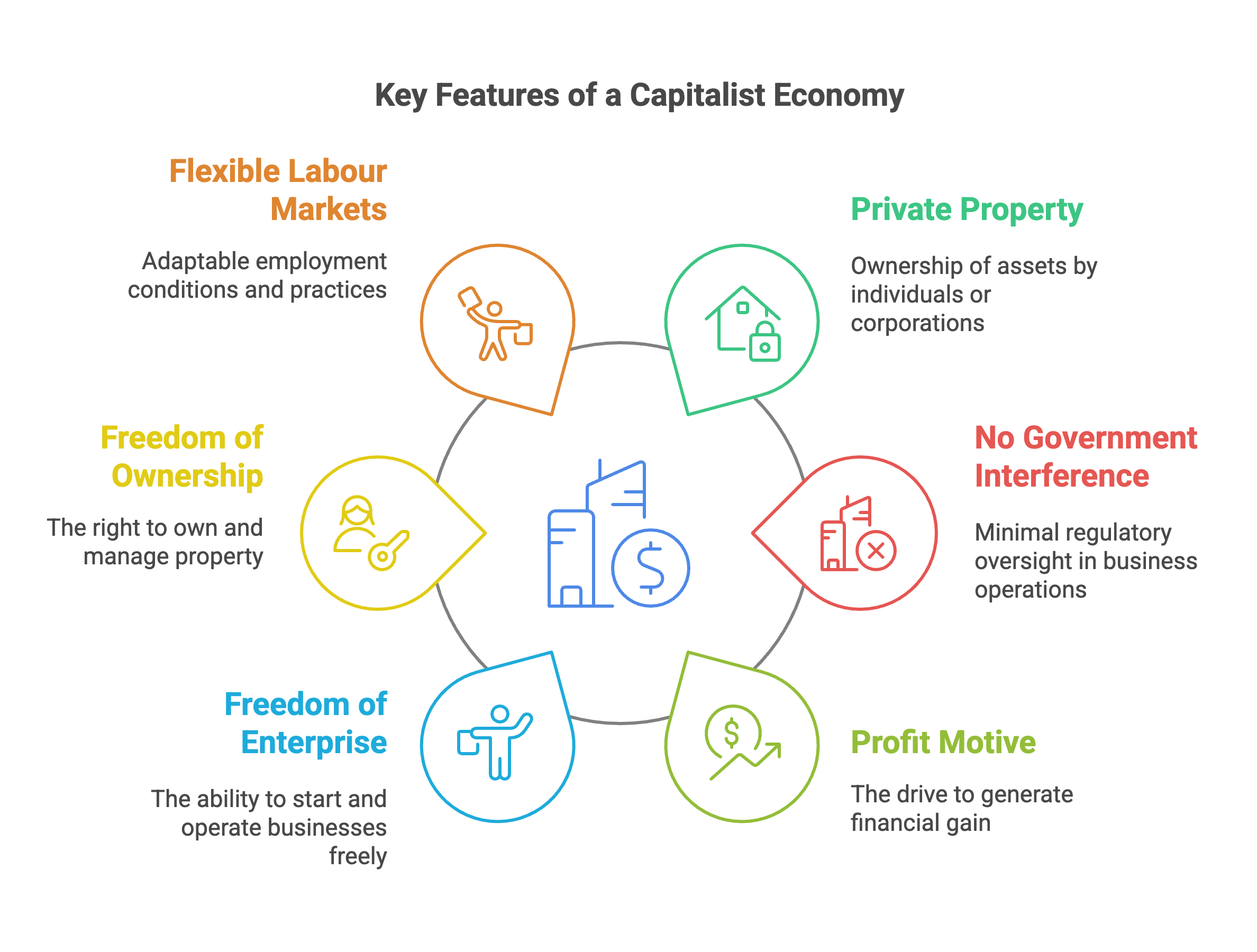
Some important terms
Revenue: It is the money earned from regular business activities, calculated by multiplying the average price by the number of units sold.
Investment Expenditure: It is the money spent by an individual, business, or government to create new capital assets like machinery or buildings.
Wage Rate: The wage rate is the price paid for labour services.
Wage Labour: Wage labour is work done in exchange for a wage rate.
Entrepreneurs: An entrepreneur is someone who starts a business based on an idea or product, taking most of the risks and earning most of the rewards.
Four Main Sectors of the Economy
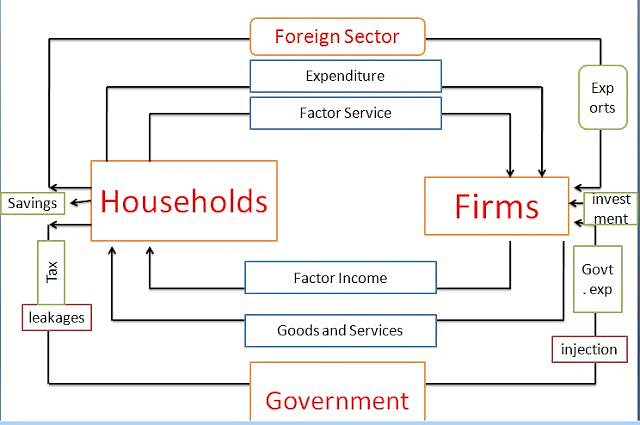
- The four main sectors are the Household Sector, the Business Sector, the Government Sector, and the Foreign Sector. These sectors help analyse the economy.
- Each sector contributes to the Gross Domestic Product (GDP).
Household Sector:
- Consists of all consumers and individuals.
- Purchases goods and services for use and supplies land, labour, capital, and entrepreneurs.
- Accounts for the consumption expenditures in GDP.
- Households also save money and pay taxes.
- A household is defined as a person or group making independent economic decisions.
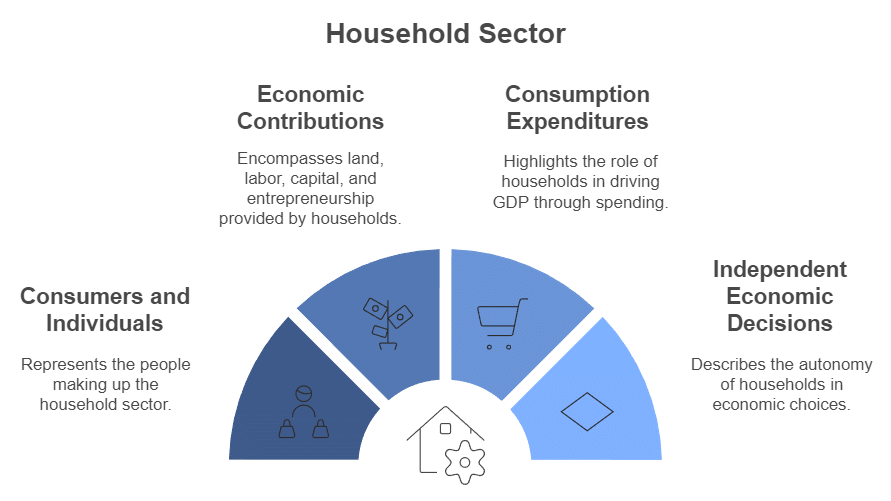
Firms:
- People in households work in firms to earn a living.
- Firms produce goods and services.
- They use production factors and aim to make a profit.
- Includes sole proprietorships, partnerships, and corporations.
- Responsible for the GDP's investment expenditure.
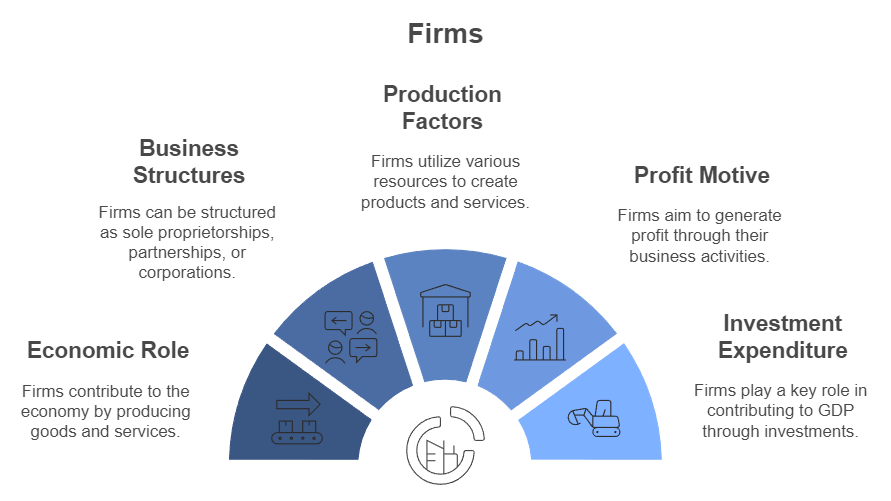
Government Sector:
- Maintains law and order, encourages growth, and delivers services.
- Handles the government's purchases within GDP.
- Collects taxes to finance projects such as dams, roads, and industries that provide long-term benefits.
- Invests in education and health and offers these at a low cost.
- Examples include the Department of Transportation and the Environmental Protection Agency.
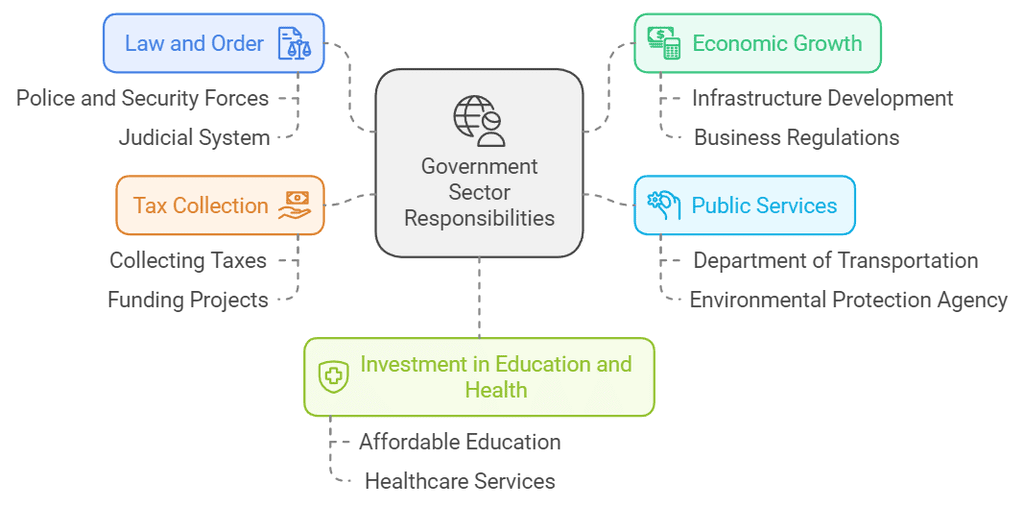
Foreign/External Sector:
- Oversees the export and import of goods and services.
- Exports are local goods sold abroad.
- Imports are foreign goods purchased domestically.
- Capital may flow into the domestic country from abroad, or the domestic country may send capital to foreign nations.
- Net exports (exports minus imports) represent this sector's impact on GDP.
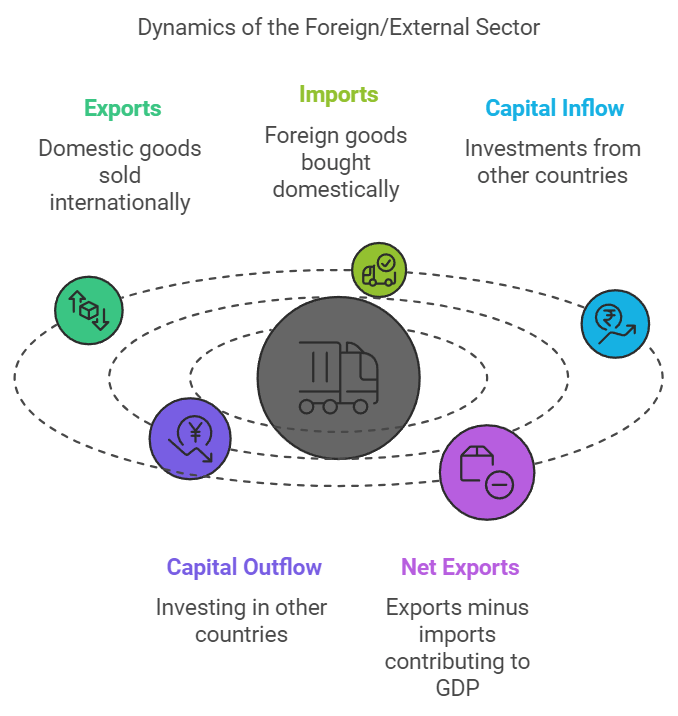
Summary
Macroeconomics studies the economy as a whole, focusing on total economic factors and how different parts of the economy interact. Unlike microeconomics, which looks at specific sectors while assuming the rest of the economy stays constant, macroeconomics considers the bigger picture. It became a distinct field in the 1930s, inspired by Keynes during the Great Depression. This book mainly explores how a capitalist economy works, so it may not fully reflect a developing country’s economy. Macroeconomics views the economy as made up of four sectors: households, firms, government, and the external sector.
|
64 videos|308 docs|51 tests
|
FAQs on Introduction to Macroeconomics Chapter Notes - Economics Class 12 - Commerce
| 1. What is the significance of studying Macroeconomics? |  |
| 2. How does Macroeconomics differ from Microeconomics? |  |
| 3. What are some key concepts in Macroeconomics that students should be familiar with? |  |
| 4. How does Macroeconomics impact everyday life? |  |
| 5. What are some common career paths for individuals with a background in Macroeconomics? |  |
















